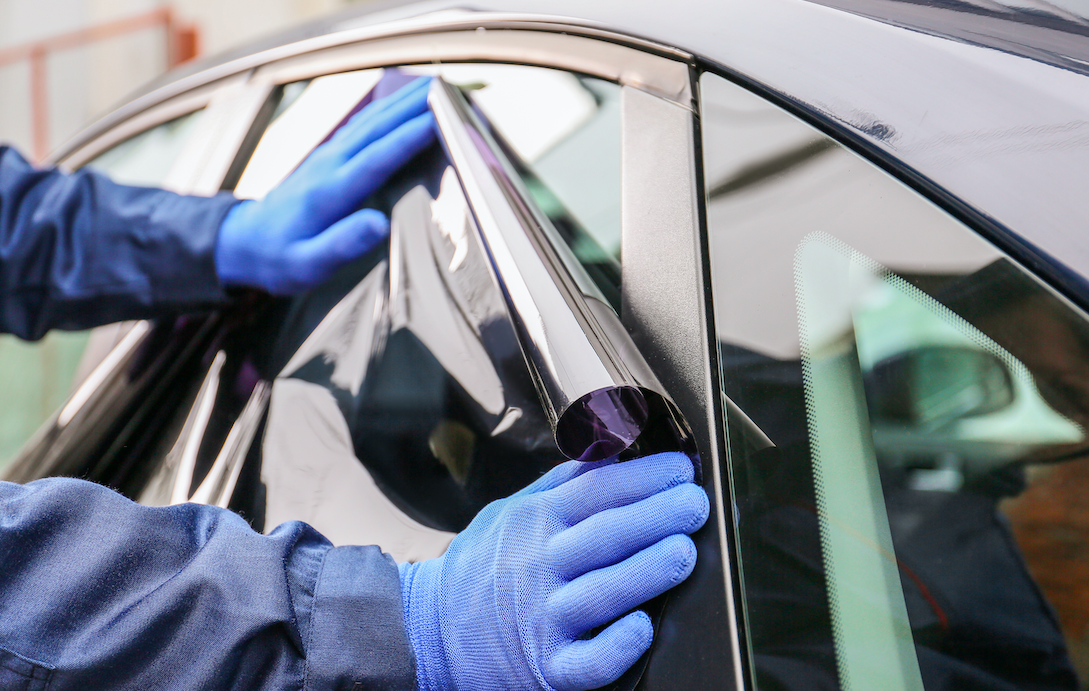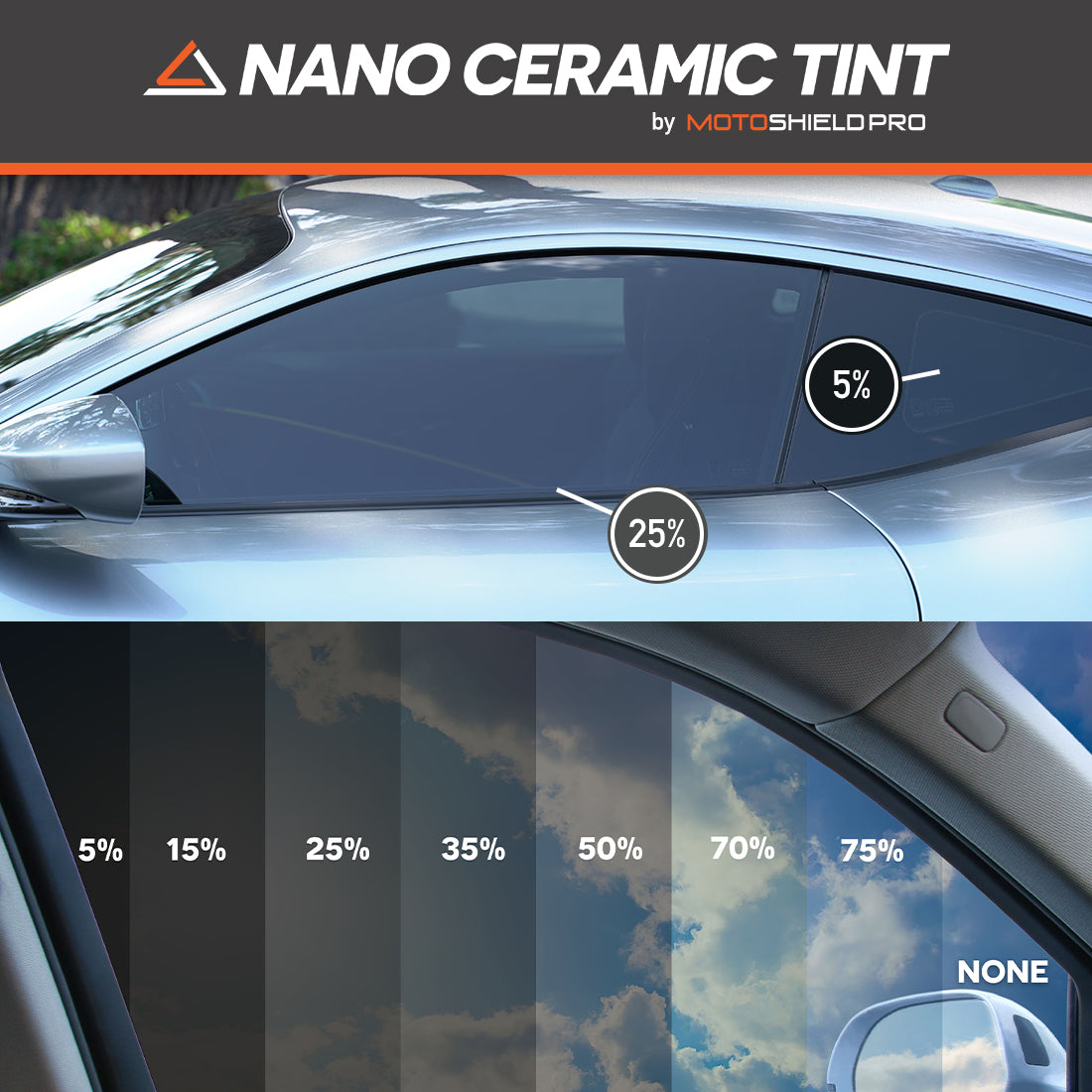The Technology Behind Window Tinting: How It Filters UV Rays and Sunlight
The Technology Behind Window Tinting: How It Filters UV Rays and Sunlight
Blog Article
Window Tinting Options: Find the Right Shade for Your Style and Needs
Choosing the suitable window tint for your lorry involves a careful factor to consider of different aspects, including personal visual appeals, functional needs, and lawful constraints. With alternatives ranging from light tintss that provide minimal privacy to darker shades that boost privacy, the selections can be overwhelming.
Comprehending Window Tinting Degrees
When taking into consideration window tinting, it is crucial to recognize the numerous degrees of tint readily available, as they dramatically impact both visual appeals and functionality. Window tinting is categorized based upon Visible Light Transmission (VLT) percents, which show the quantity of light permitted to go through the glass. The VLT portion can range from really light (over 70%) to very dark (listed below 5%)
The main levels of tint include clear, which provides UV defense without changing exposure; light tint (over 50% VLT), which somewhat decreases glow while maintaining presence; tool tint (around 35% VLT), striking an equilibrium between personal privacy and light transmission; and dark tint (below 20% VLT), providing substantial personal privacy and warm decrease however restricting outside visibility.
Recognizing these levels is crucial as they can affect driving safety and security, legal conformity, and individual comfort. Furthermore, local laws usually dictate allowable tint levels, differing by state or community. Prior to picking a tint, it is a good idea to research and guarantee adherence to these regulations while thinking about individual choices for style and functional advantages.
Popular Tint Tone Explained

One of one of the most prominent options is the traditional dark tint, normally ranging from 20% to 5% VLT (Noticeable Light Transmission) This shade supplies maximum personal privacy and a smooth, sophisticated appearance. It efficiently obstructs UV rays and warm, making it optimal for bright environments, though it might limit visibility during the night.
Alternatively, lighter tones such as 35% or 50% VLT give a more subtle look while still using some degree of privacy. These shades are excellent for those looking for an equilibrium in between aesthetics and performance, as they allow for much better visibility and adhere to various legal standards.
One more emerging choice is the ceramic tint, which can be available in a selection of shades - window tinting. It uses remarkable heat being rejected and UV defense without significantly altering the automobile's look

Legal Laws for Window Tinting
Comprehending the legal guidelines surrounding window tinting is vital for vehicle proprietors looking to personalize their cars and trucks. Each state in the united state has certain legislations governing the darkness or agility of window tintss, frequently measured by Visible Light Transmission (VLT) percent. VLT refers to the amount of light that can travel through the movie and the glass combined.
In many states, guidelines determine various VLT portions for numerous windowss, including front windshields, side windowss, and rear windowss. Some states might permit a color of 70% VLT for windshields while allowing darker tintss for back windowss. Furthermore, particular states have limitations on reflective tintss, which can create glow for other vehicle drivers.
Failing to abide by these regulations can bring about fines, mandated removal of the tint, and enhanced insurance premiums. Vehicle owners ought to speak with neighborhood regulations learn the facts here now or state DMV websites to guarantee they are within lawful restrictions prior to waging installment. Recognizing these policies not just assists prevent legal consequences but additionally makes certain a safe driving experience.
Benefits of Various Tint Materials
Discovering the advantages of various tint materials discloses significant benefits that can boost both the performance and aesthetic appeal of an automobile. Each material offers distinctive qualities fit to specific requirements and preferences.
Dyeded window films are popular for their cost and capability to lower glow. Metalized films, on the other hand, deal exceptional heat reduction and UV security due to their reflective buildings.
Ceramic window films represent a premium option, supplying exceptional heat being rejected while maintaining visibility. They are non-metallic, thus avoiding any signal interruption, and are highly durable, resisting scratches and fading over time. In addition, ceramic films do not consist of dyes, guaranteeing a longer-lasting appearance.
Finally, crossbreed films combine elements from dyeded and metalized choices, offering a well balanced performance in regards to warm rejection, glow reduction, and price. Each tint product serves distinct purposes, enabling vehicle owners to choose the most effective fit for their lifestyle and aesthetic choices, eventually improving their driving experience.
Selecting the Right Tint for You
Locating the right window tint entails taking into consideration numerous variables, consisting of individual preferences, automobile type, and local policies. Initially, analyze your individual style and desired degree of privacy, as these will certainly guide your selection of tint shade. Darker read here tintss give boosted personal privacy but may not be ideal for all drivers, particularly those who like an even more open feeling inside their vehicle.
Following, consider your find more info automobile type, as the size and shape of windowss can affect the performance of particular tintss. As an example, bigger windowss might gain from reflective tintss that reduce glare while smaller windowss could be a lot more fit to dyeded films that offer refined aesthetic appeals.
In addition, it's critical to check local guidelines regarding window tinting. Numerous states enforce limitations on the allowable darkness and reflectivity, especially for front windowss. Compliance with these regulations is important to make certain and stay clear of penalties safety and security.
Last but not least, review the tint product that finest fits your requirements. Choices consist of dyeded, metalized, ceramic, and hybrid films, each offering unique benefits associating with heat denial, UV defense, and sturdiness. By considering these factors, you can with confidence select a window tint that straightens with your design and useful demands.
Conclusion
To conclude, picking the appropriate window tint needs mindful consideration of various factors, including VLT percentages, neighborhood guidelines, and the wanted aesthetic. Various tint materials offer one-of-a-kind benefits that can improve lorry comfort and defense. By extensively recognizing the available alternatives and aligning them with private choices and useful requirements, one can achieve an ideal balance in between design and functionality in window tinting choices.
Picking the ideal window tint for your automobile includes a mindful factor to consider of different variables, consisting of individual looks, useful requirements, and lawful restrictions. Each state in the United state has details laws regulating the darkness or agility of window tintss, often measured by Visible Light Transmission (VLT) portion. Some states might enable a color of 70% VLT for windscreens while allowing darker tintss for back windowss.Discovering the right window tint includes thinking about numerous aspects, consisting of individual choices, automobile type, and neighborhood guidelines.In final thought, selecting the ideal window tint calls for mindful factor to consider of different elements, including VLT portions, regional laws, and the desired aesthetic.
Report this page